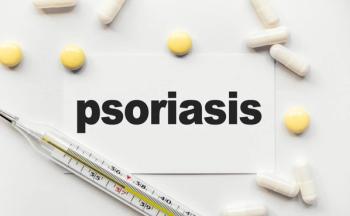
Million Hearts Payment Model Shows Prevention of CVD Outcomes Without Increasing Spending
A 5-year randomized trial showed that the Million Hearts Model, which paid health care organizations to monitor and reduce cardiovascular disease (CVD) risk, was effective in reducing first-time heart attacks and strokes without associated increases in Medicare spending.
CMS’ Million Hearts Model, which aimed to incentivize health care organizations to assess and address cardiovascular disease (CVD) risk factors and thus prevent downstream CVD events, was associated with a significant reduction in heart attacks, strokes, and CVD deaths, according to
The Million Hearts CVD Risk Reduction Model tested by CMS’ Center for Medicare and Medicaid Innovation has roots going back to 2016, when the 516 participants were
Aligned with this value-based strategy, the JAMA article details the components of the Million Hearts payment model for participating organizations assigned to the intervention group: (1) agreements that the organization would deliver CVD preventive care based on guidelines, including risk score calculation, discussions of CVD risk, individualized care plans, yearly reassessment, and twice-yearly check-ins, and (2) payments from CMS to the organizations per beneficiary who was assessed for risk and received CV care management, with payment amounts increasing as the organization’s mean beneficiary risk score was reduced.1 CMS also made available the Million Hearts Data Registry, to help calculate risk scores, as well as webinars and performance reports. Control group organizations submitted clinical data to the registry but did not receive per-beneficiary per-month payments.
The study examined registry data from 172 intervention organizations and 170 control organizations offering standard care, encompassing 130,578 and 88,286 beneficiaries, respectively. Researchers noted that the intervention and control beneficiaries were similar in terms of age, sex, race, and baseline CVD risk, with ample opportunities in both groups to reduce CVD risk; for instance, about 3 in 4 high-risk beneficiaries had high systolic blood pressure.
After a median follow-up of 4.3 years, beneficiaries at high and medium CVD risk in the intervention group experienced a 3.3% lower rate of CVD events than those in the control group (P = .09) and a 4.2% lower rate of combined first-time CVD events and CVD deaths (P = .02). The intervention group also showed a 4.3% lower death rate in the intervention beneficiaries, with a notable 14.4% lower death rate from coronary heart disease in high-risk beneficiaries in the intervention group than among their control group counterparts.
No significant differences in Medicare spending on CVD events were seen between the intervention and control groups, and per-beneficiary per-month Parts A and B spending was similar between the groups, even when including the payments distributed by the model.
The study authors noted that the results of 1 first-time CVD event averted for every 400 high- and medium-risk beneficiaries and 1 first-time CVD event or CVD death averted for every 250 such beneficiaries indicate the model’s potential to alter risk trajectories efficiently. In fact, they noted, these numbers “compare favorably to historical values of numbers needed to screen for common cancer screenings.”
Some sources of bias could stem from organization’s selective participation in the activities of the model or their volunteering to enter the model at all, the authors wrote, and the COVID-19 pandemic may have affected the findings on averted hospitalizations. Still, they concluded, these results suggest that “paying for risk assessment and reduction could improve outcomes of public health importance.”
References
1. Blue L, Kranker K, Markovitz AR, et al. Effects of the Million Hearts Model on myocardial infarctions, strokes, and Medicare spending. JAMA. 2023;330(15):1437-1447. doi:10.1001/jama.2023.19597
2. Caffrey M. Medicare names participants in heart attack, stroke prevention effort. The American Journal of Managed Care. July 22, 2016. Accessed October 19, 2023. https://www.ajmc.com/view/medicare-names-participants-in-heart-attack-stroke-prevention-effort
3. Dr Janet Wright discusses how Million Hearts will leverage partnerships for success. The American Journal of Managed Care. April 6, 2017. Accessed October 19, 2023. https://www.ajmc.com/view/dr-janet-wright-discusses-how-million-hearts-will-leverage-partnerships-for-success
Newsletter
Stay ahead of policy, cost, and value—subscribe to AJMC for expert insights at the intersection of clinical care and health economics.






































